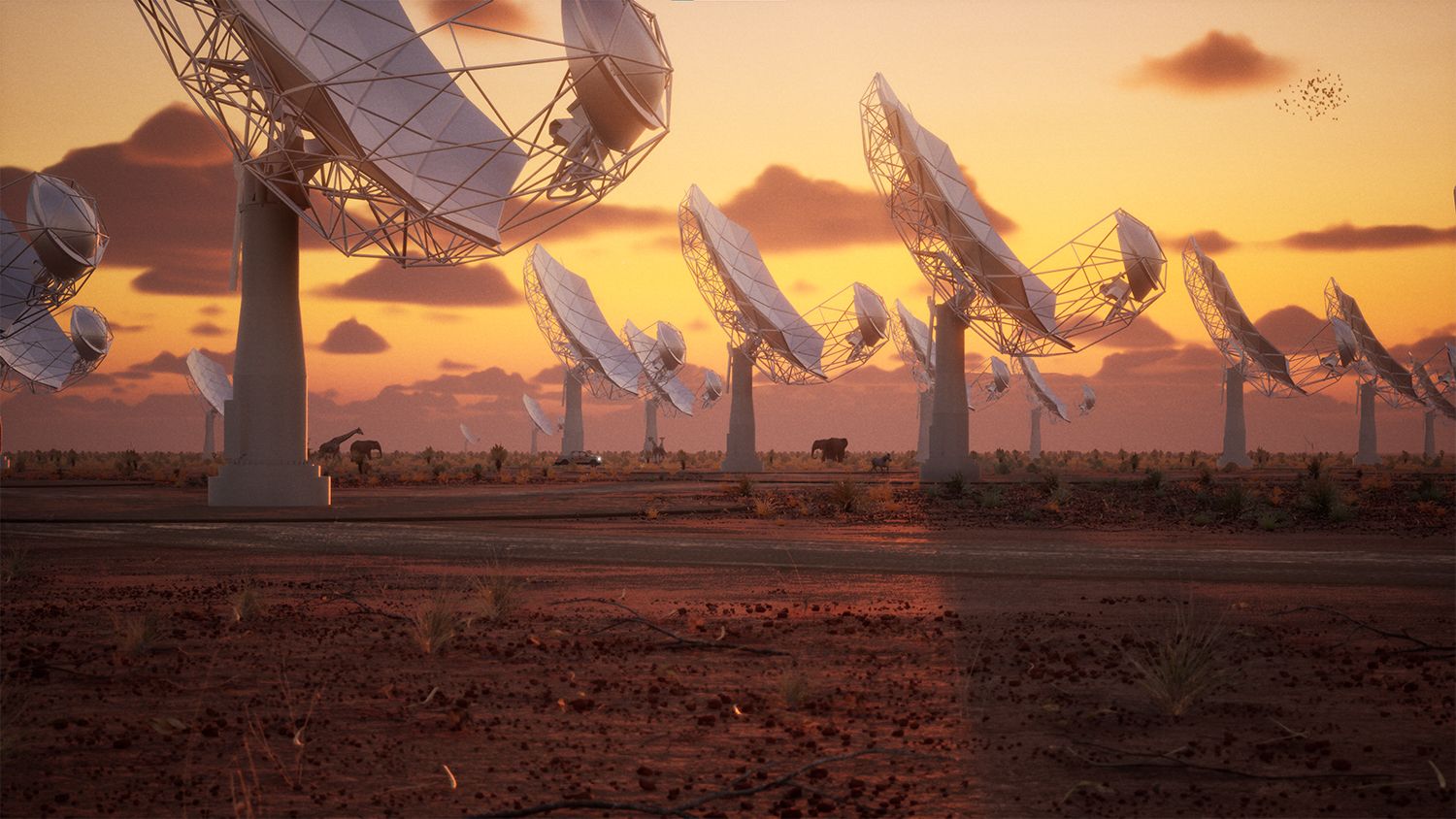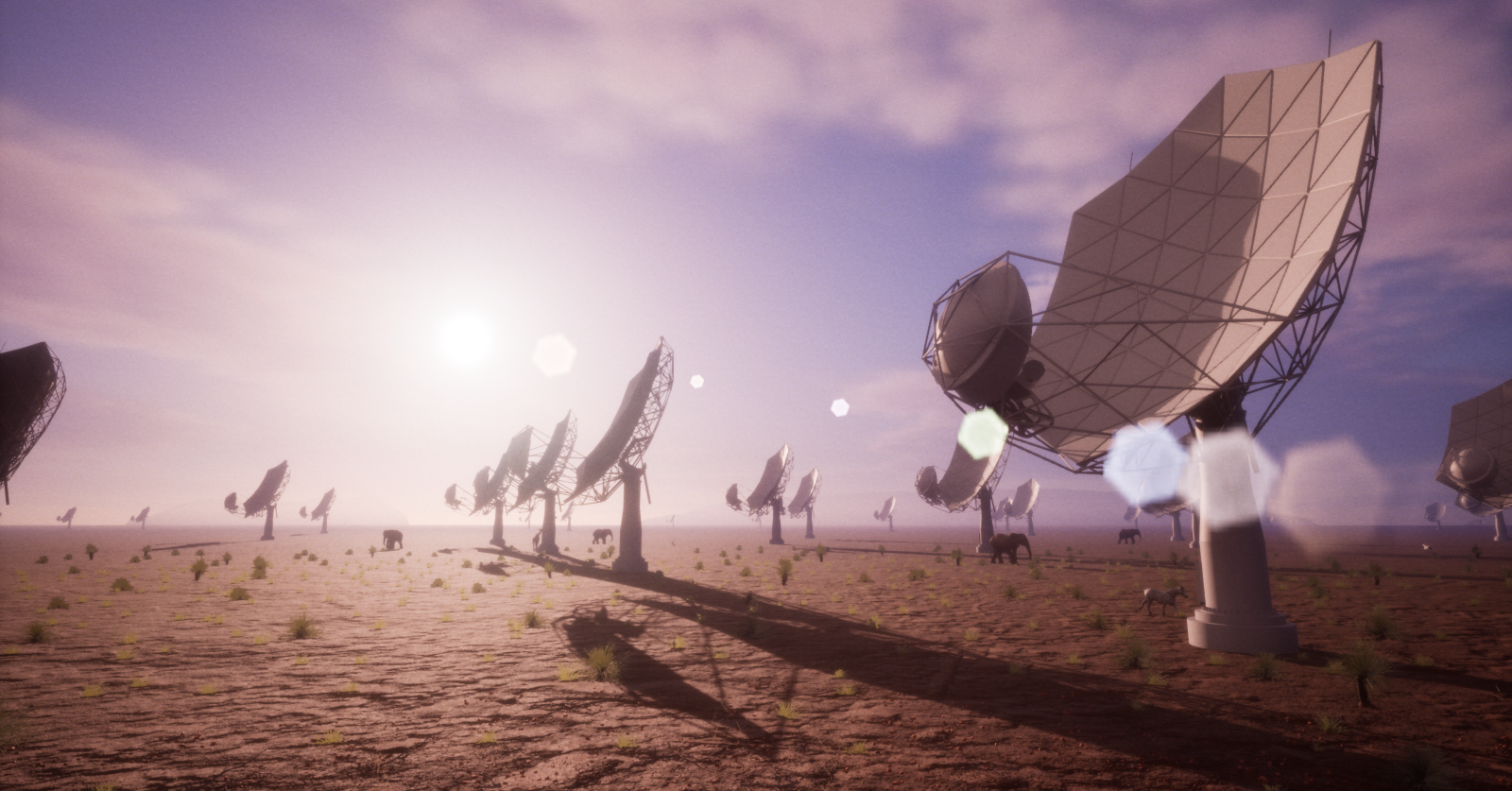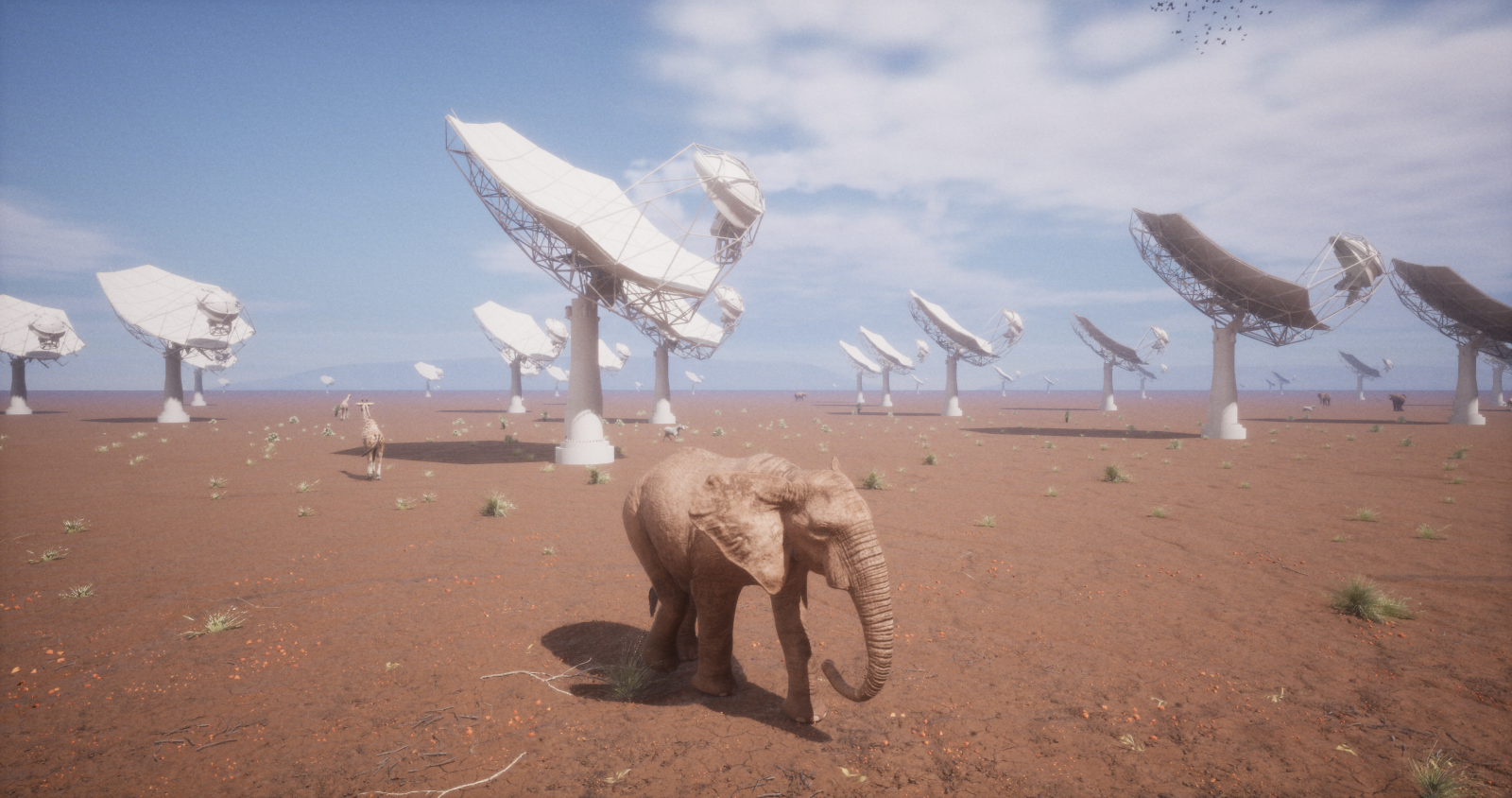eM+
SKA Simulator is a playful interactive experience developed by eM+ engineers for Cosmos Archaeology. It was realised using data supplied by the SKA (Square Kilometre Array) observatory that combines images of the hardware already on the ground with digital renderings of devices yet to be constructed. Using a six degrees of freedom (6DoF) controller, the participant can navigate in any direction through the desert landscape of what will eventually be the world’s biggest telescope, to cover a total collecting zone of one square kilometre across the South African site, eight other African countries, and its Western Australian location.


Image courtesy of eM+.

Image courtesy of eM+.
Standing before a large-scale video projection, viewers are situated in a 3D model of the South African site among a field of enormous white radar dishes, while elephants, lions and giraffes wander the scene, and day turns to night. The antennae are configured as a field because numerous small and large devices can be connected by optical fibre to create a single virtual telescope, or array. With more than 130,000 small antennae and 200 big dishes, the SKA is collecting truly big data, supported by the world’s five fastest supercomputers. In January 2022, Switzerland also joined the SKA Observatory, with Australia, China, Italy, the Netherlands, Portugal, South Africa, and the United Kingdom.
Since the 1930s, when the first radio signals from space were detected by telescopes to explore the Universe, astronomers have used radio astronomy to make significant breakthroughs in our understanding of the Universe. Among them, the discovery of pulsars in 1967 by Jocelyn Bell Burnell, whose story features in the documentary film The Silent Pulsar of the Universe also featured in Cosmos Archaeology.
The remote situation of these radars is crucial as they must detect very faint radio signals from the Universe, known as radio frequency interference. For radio astronomers, these signals are equivalent to the emission of light that astronomers struggle extract from the sky. Rather than light pollution, these detectors are placed in “radio quiet zones” to avoid ground-based radio interference.
Tapping into the recurring Cosmos Archaeology theme of space pollution, this remote location does not however avoid the negative impacts of burgeoning number of satellites in the sky. SKAO is therefore engaged in raising the profile of this issue through political forums and in working with the International Astronomical Union's Centre for the “Protection of the Dark and Quiet Sky from Satellite Constellation Interference”.